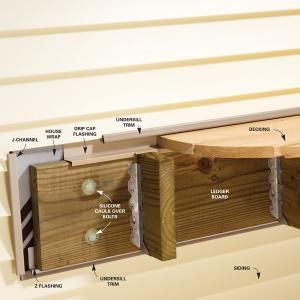Flashing Behind Siding

When it comes to flashing siding corners many builders simply use a 1x wood corner.
Flashing behind siding. Even if the roof has been properly flashed against the sidewall this one hasn t water can still run down the side of the house and behind the siding causing rot. And when those corners. Slip flashing under siding. When slipping the flashing under the siding be sure to slide the flashing to the left or right of the ledger by at least 2.
Flashing helps prevent any moisture which can collect due to condensation or small gaps in the siding that flows downward from infiltrating behind the house wrap where it can do damage. Continue installing the z flashing at the top edge of the siding panels across the full length of wall. But unlike fiber cement siding wood is almost sure to rot. Common places for bees to hide and build nests include overhangs cracks window frames shutters door frames and underneath the siding.
It is always recommended to install step flashing behind stucco dryvit wood panel lap siding vinyl siding cedar shingle siding etc. Inside corner w flashing. Slip flashing under siding. Then slip flashing behind the siding covering the top edge of the ledger.
Start by making an outline on the siding where you want to position the ledger board. The solution to rotting sidewalls is a small piece of bent metal called a kickout flashing at roofing suppliers which simply directs all that water away from the wall. Make the outline large enough to include space for the deck boards on top the ledger and. Position the flashing lengths as defined in step 2 overlapping the ends a minimum of 2 inches onto the previous flashing piece and securing the flashing with 8d nails at each wall stud.
This will ensure water doesn t infiltrate behind the flashing. However in most instances step flashing should be installed behind siding. Note that the flashing does not go up high enough to hit the underlying nail but is still high enough to end up behind the next row of overlying siding. Slip the siding up and around the door.
Cut the z flashing as needed using metal snips or a. Therefore the upper piece of wrap or flashing should always overlap any lower pieces. Snap a chalk line cut out the siding and tack up the ledger board. Even though a hive nestled inside the wood aluminum or vinyl siding is hard to actually reach these are in fact some of the easiest and safest types of nests to get rid of because they require no contact.














































